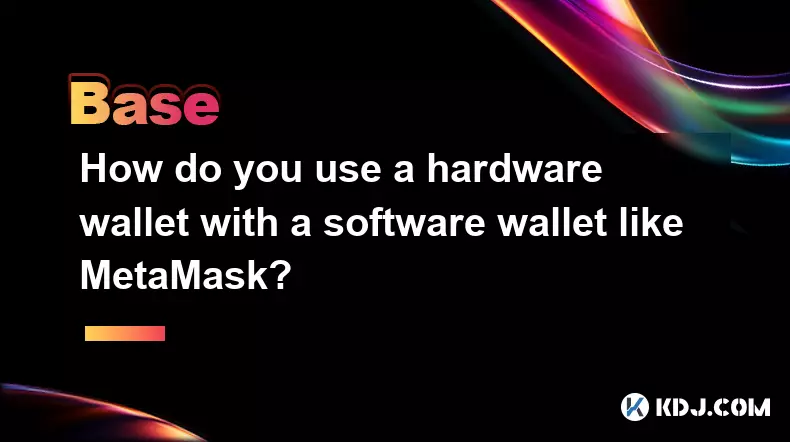-
 bitcoin
bitcoin $101752.865364 USD
-1.09% -
 ethereum
ethereum $3382.985899 USD
-1.38% -
 tether
tether $0.999658 USD
0.04% -
 xrp
xrp $2.272505 USD
-1.51% -
 bnb
bnb $989.089004 USD
0.14% -
 solana
solana $156.962612 USD
-3.08% -
 usd-coin
usd-coin $0.999776 USD
0.01% -
 tron
tron $0.290786 USD
-0.69% -
 dogecoin
dogecoin $0.174594 USD
-2.86% -
 cardano
cardano $0.560085 USD
-3.55% -
 hyperliquid
hyperliquid $40.023704 USD
-5.75% -
 chainlink
chainlink $15.324649 USD
-2.78% -
 bitcoin-cash
bitcoin-cash $493.576540 USD
-3.52% -
 zcash
zcash $571.320038 USD
-12.05% -
 stellar
stellar $0.280066 USD
-4.26%
What is Merkle tree?
Merkle trees, or hash trees, efficiently verify large datasets' integrity using cryptographic hashes. This hierarchical structure, crucial for Bitcoin, lets nodes verify transactions without downloading the entire blockchain, boosting efficiency and security.
Mar 06, 2025 at 03:12 pm

- Merkle trees, also known as hash trees, are fundamental data structures in cryptography and blockchain technology.
- They provide a way to efficiently verify the integrity of large datasets.
- Merkle trees use cryptographic hash functions to create a hierarchical structure.
- This structure allows for efficient verification of data without needing to download the entire dataset.
- They are crucial for Bitcoin's and other cryptocurrencies' transaction verification process.
A Merkle tree, or hash tree, is a data structure used in cryptography to efficiently and securely verify the integrity of large datasets. Imagine a massive file – checking every single byte for corruption would be incredibly time-consuming. A Merkle tree provides a shortcut. It uses a cryptographic hash function to generate a unique "fingerprint" (hash) for each piece of data. These hashes are then combined hierarchically to form the tree structure.
How Does a Merkle Tree Work?The process begins with the individual data blocks. Each block is hashed individually. Then, pairs of these hashes are combined, hashed again, and the process repeats until only one hash remains at the top – the Merkle root. This root acts as a single, concise representation of the entire dataset's integrity.
Building a Merkle Tree: A Step-by-Step GuideLet's assume we have four data blocks (A, B, C, D):
- Step 1: Hash each data block individually: hash(A), hash(B), hash(C), hash(D).
- Step 2: Pair the hashes: hash(hash(A), hash(B)), hash(hash(C), hash(D)).
- Step 3: Hash the paired hashes: hash(hash(hash(A), hash(B)), hash(hash(C), hash(D))). This is the Merkle Root.
This final hash, the Merkle root, represents the entire dataset. Any change to any single data block will result in a different Merkle root.
Merkle Trees and CryptocurrenciesMerkle trees are vital in the functioning of cryptocurrencies like Bitcoin. They significantly improve the efficiency of verifying transactions. Instead of verifying every single transaction in a block, nodes only need to verify a small portion and the Merkle root.
Merkle Tree and Transaction VerificationA blockchain block contains numerous transactions. Each transaction is hashed individually. These individual transaction hashes are then used to construct a Merkle tree. The Merkle root of this tree is then included in the block header.
Verifying a Specific TransactionTo verify a specific transaction, a node only needs the Merkle branch (the path from the transaction hash to the Merkle root). The node can then recalculate the Merkle root using the transaction hash and the Merkle branch. If the recalculated root matches the root in the block header, the transaction is verified as authentic. This dramatically reduces the data needed for verification.
Benefits of Using Merkle Trees- Efficiency: Verifying a single piece of data doesn't require processing the entire dataset.
- Data Integrity: Any alteration to the data will be immediately detectable.
- Scalability: Handles large datasets efficiently, vital for blockchain's scalability.
- Security: Cryptographic hash functions ensure data integrity and tamper-proofing.
Compared to simply hashing the entire dataset, Merkle trees offer significant advantages in terms of efficiency and scalability. Other data structures might not offer the same level of security and integrity verification in a decentralized environment.
The Role of Cryptographic Hash FunctionsCryptographic hash functions are essential to the security of Merkle trees. These functions produce a fixed-size output (the hash) regardless of the input size. Small changes in the input result in drastically different outputs. This property is crucial for detecting even minor alterations in the data.
Different Types of Merkle TreesWhile the basic structure remains the same, variations exist, such as extended Merkle trees, which are commonly used in some cryptocurrencies to accommodate different transaction sizes more efficiently.
Merkle Trees and Future DevelopmentsAs blockchain technology continues to evolve, Merkle trees will likely remain a fundamental component, adapting and improving to meet the needs of increasingly complex and scalable systems. Research into optimized Merkle tree implementations continues to enhance efficiency and security.
Frequently Asked Questions:Q: What is the difference between a Merkle tree and a hash tree?A: The terms "Merkle tree" and "hash tree" are often used interchangeably. A Merkle tree is a specific type of hash tree.
Q: How are Merkle trees used in Bitcoin's Proof-of-Work?A: While not directly involved in the Proof-of-Work consensus mechanism itself, Merkle trees are crucial for verifying the transactions included in each block, which is essential for the overall security and integrity of the Bitcoin blockchain.
Q: Can Merkle trees be used outside of cryptocurrency?A: Absolutely. Their applications extend to various fields requiring data integrity verification, such as software distribution, data storage, and version control systems.
Q: What happens if a hash collision occurs in a Merkle tree?A: Cryptographically secure hash functions are designed to make collisions extremely unlikely. If a collision were to occur (a highly improbable event), it would compromise the integrity of the Merkle tree and the data it represents.
Q: How does the size of a Merkle tree affect performance?A: The size of the Merkle tree grows logarithmically with the number of data blocks. This logarithmic growth makes Merkle trees highly efficient even with very large datasets.
Disclaimer:info@kdj.com
The information provided is not trading advice. kdj.com does not assume any responsibility for any investments made based on the information provided in this article. Cryptocurrencies are highly volatile and it is highly recommended that you invest with caution after thorough research!
If you believe that the content used on this website infringes your copyright, please contact us immediately (info@kdj.com) and we will delete it promptly.
- Ripple (XRP) in 2026: Hold or Fold? A Look at XRP's Future and Emerging DeFi Alternatives
- 2025-11-08 18:35:01
- Zcash ZEC Coin Price Explosion: From Privacy Niche to Center Stage
- 2025-11-08 18:55:01
- Berachain Price Prediction: Navigating the Honeycomb Hype in Crypto
- 2025-11-08 18:55:01
- Arthur Hayes, Gold, and Bitcoin: A Modern Monetary Trinity?
- 2025-11-08 19:15:01
- Shiba Inu's Next Move: Navigating a Shifting Market
- 2025-11-08 19:20:01
- Pakistan's Crypto Crossroads: Balancing Opportunity with Asset-Backed Realities
- 2025-11-08 19:20:01
Related knowledge

How does a crypto insurance protocol work?
Nov 08,2025 at 12:39am
Understanding Crypto Insurance Protocols1. A crypto insurance protocol operates by offering financial protection against losses incurred from digital ...

What is token composability and why is it called "DeFi Legos"?
Nov 09,2025 at 06:39am
Bitcoin's Role in Decentralized Finance1. Bitcoin remains the cornerstone of decentralized finance, serving as a benchmark for value and trustlessness...

What is an "exploit" versus a "hack" in the context of smart contracts?
Nov 09,2025 at 12:40am
Understanding Exploits in Smart Contracts1. An exploit refers to the utilization of a known vulnerability within a smart contract’s code to gain unint...

What is a decentralized storage network and how does it compare to cloud services?
Nov 07,2025 at 11:59pm
Understanding Decentralized Storage Networks1. A decentralized storage network distributes data across a peer-to-peer infrastructure rather than relyi...

How do you use a hardware wallet with a software wallet like MetaMask?
Nov 09,2025 at 04:20am
Connecting a Hardware Wallet to MetaMask1. Ensure your hardware wallet is updated with the latest firmware. Devices like Ledger or Trezor require up-t...

What is a factory contract and how is it used to deploy other contracts?
Nov 08,2025 at 04:20am
Understanding Factory Contracts in Blockchain Development1. A factory contract is a smart contract designed to create and deploy other smart contracts...

How does a crypto insurance protocol work?
Nov 08,2025 at 12:39am
Understanding Crypto Insurance Protocols1. A crypto insurance protocol operates by offering financial protection against losses incurred from digital ...

What is token composability and why is it called "DeFi Legos"?
Nov 09,2025 at 06:39am
Bitcoin's Role in Decentralized Finance1. Bitcoin remains the cornerstone of decentralized finance, serving as a benchmark for value and trustlessness...

What is an "exploit" versus a "hack" in the context of smart contracts?
Nov 09,2025 at 12:40am
Understanding Exploits in Smart Contracts1. An exploit refers to the utilization of a known vulnerability within a smart contract’s code to gain unint...

What is a decentralized storage network and how does it compare to cloud services?
Nov 07,2025 at 11:59pm
Understanding Decentralized Storage Networks1. A decentralized storage network distributes data across a peer-to-peer infrastructure rather than relyi...

How do you use a hardware wallet with a software wallet like MetaMask?
Nov 09,2025 at 04:20am
Connecting a Hardware Wallet to MetaMask1. Ensure your hardware wallet is updated with the latest firmware. Devices like Ledger or Trezor require up-t...

What is a factory contract and how is it used to deploy other contracts?
Nov 08,2025 at 04:20am
Understanding Factory Contracts in Blockchain Development1. A factory contract is a smart contract designed to create and deploy other smart contracts...
See all articles





















![The Graph Price Prediction [GRT Crypto Price News Today] The Graph Price Prediction [GRT Crypto Price News Today]](/uploads/2025/11/07/cryptocurrencies-news/videos/690d4df44fe69_image_500_375.webp)



















































